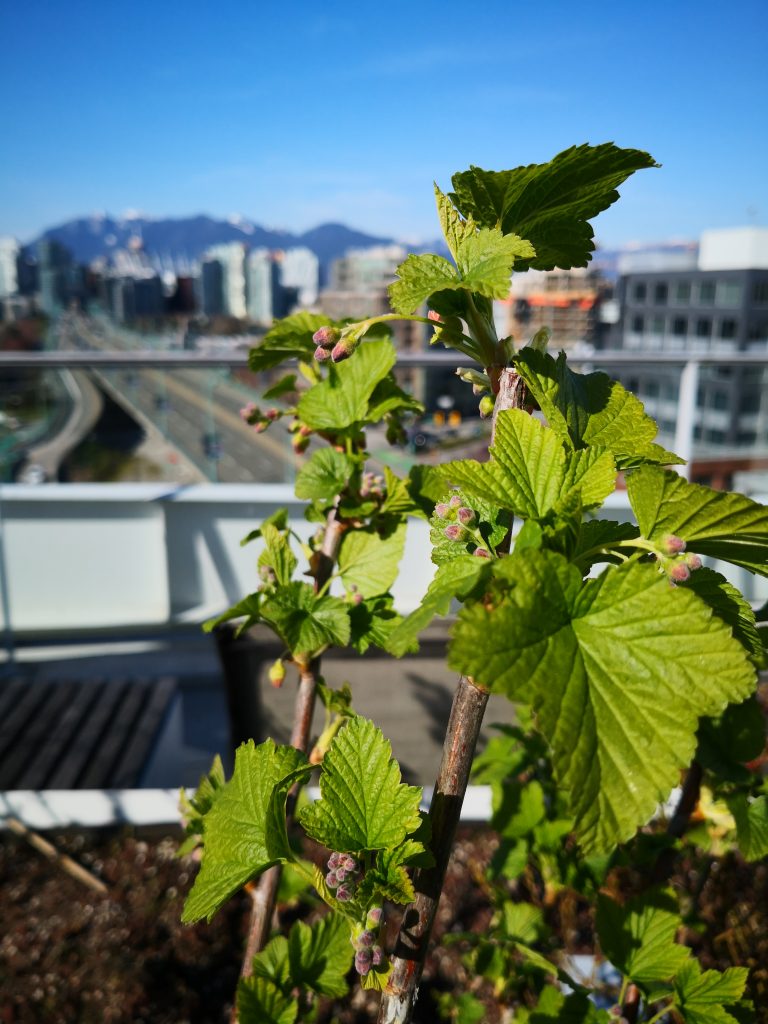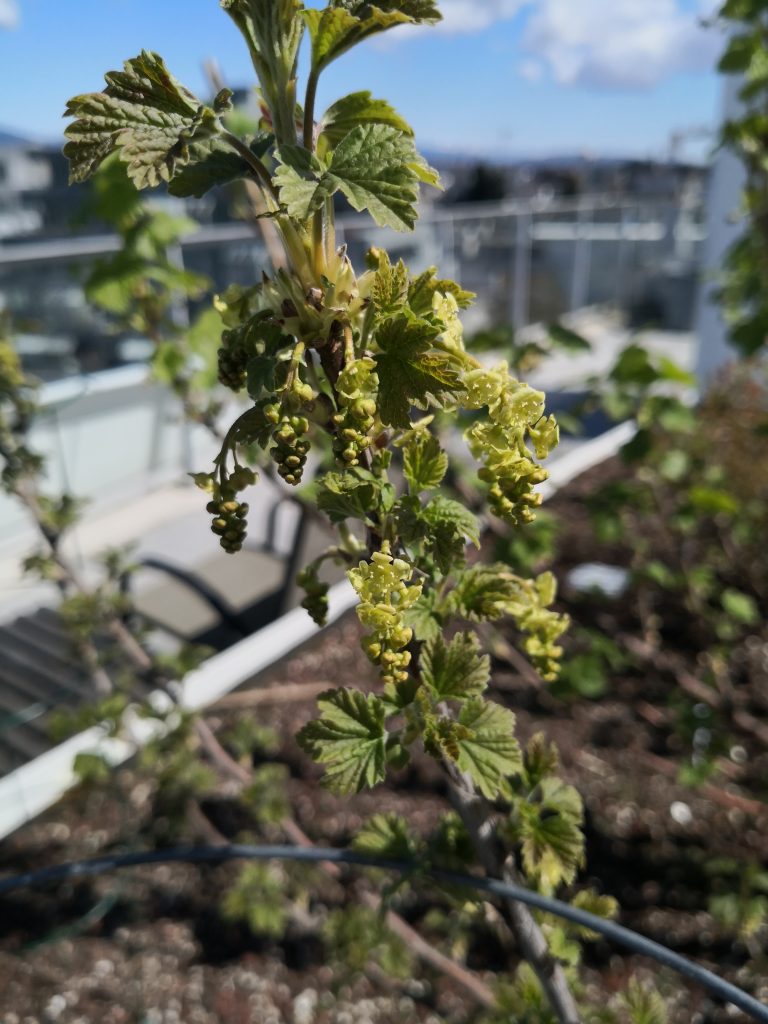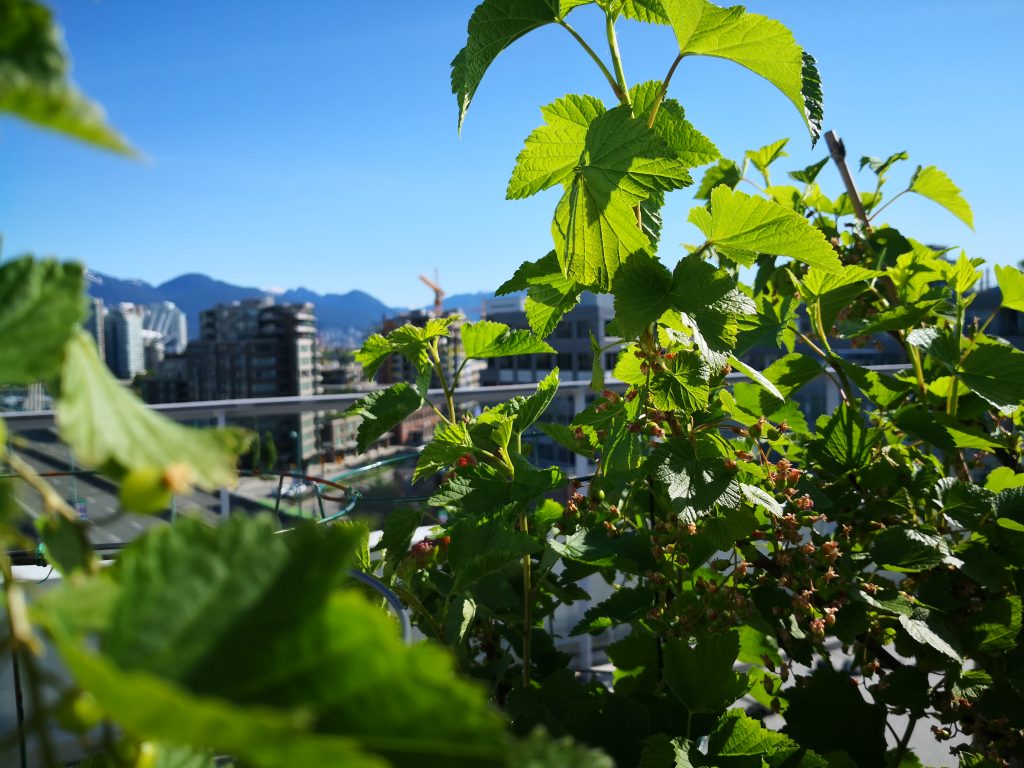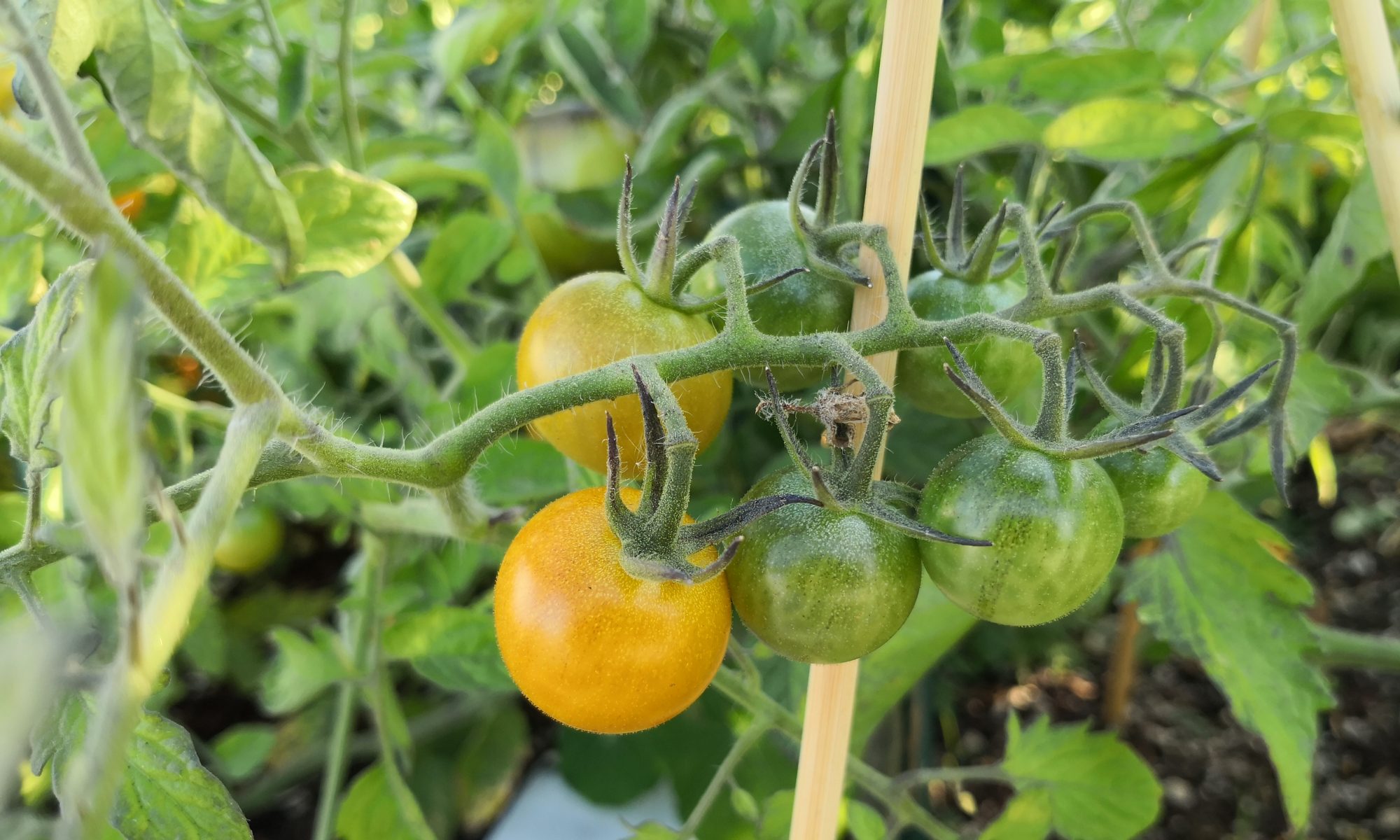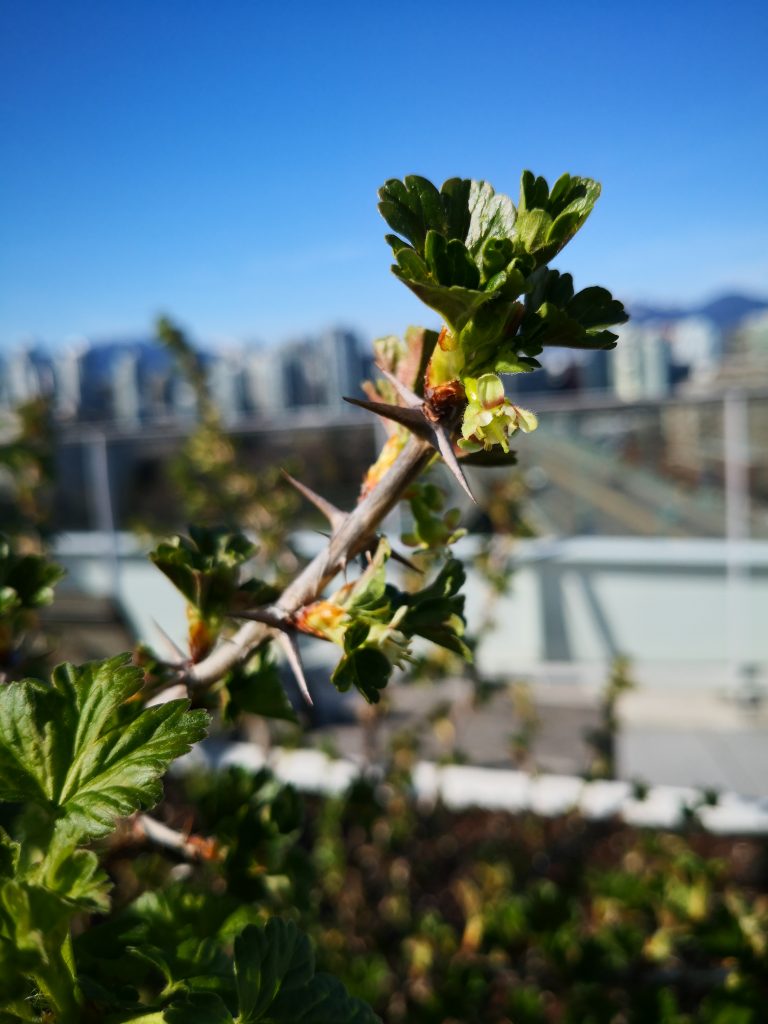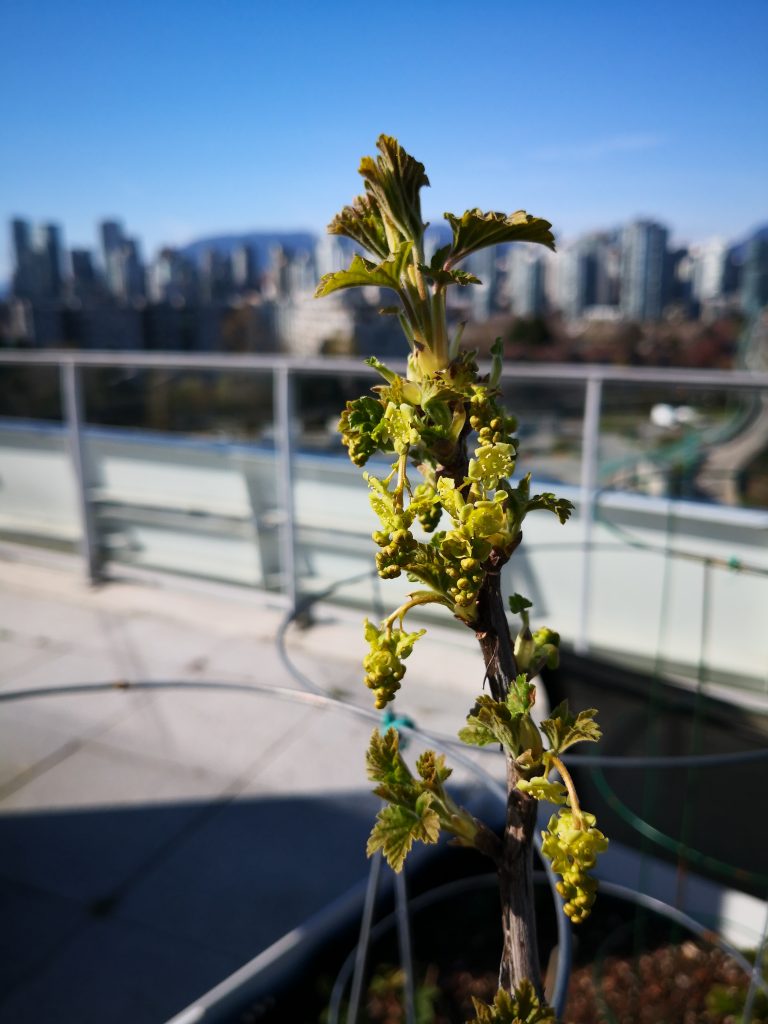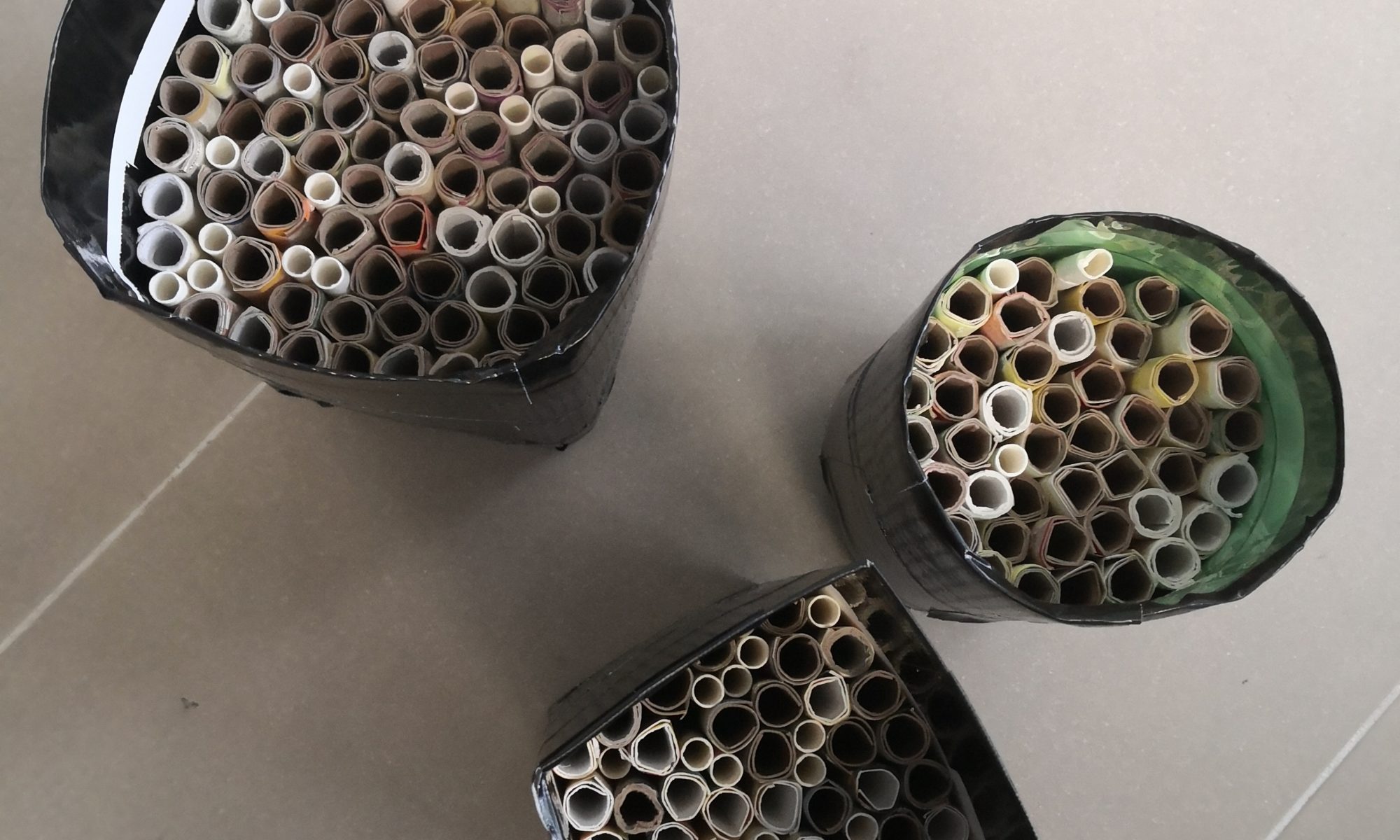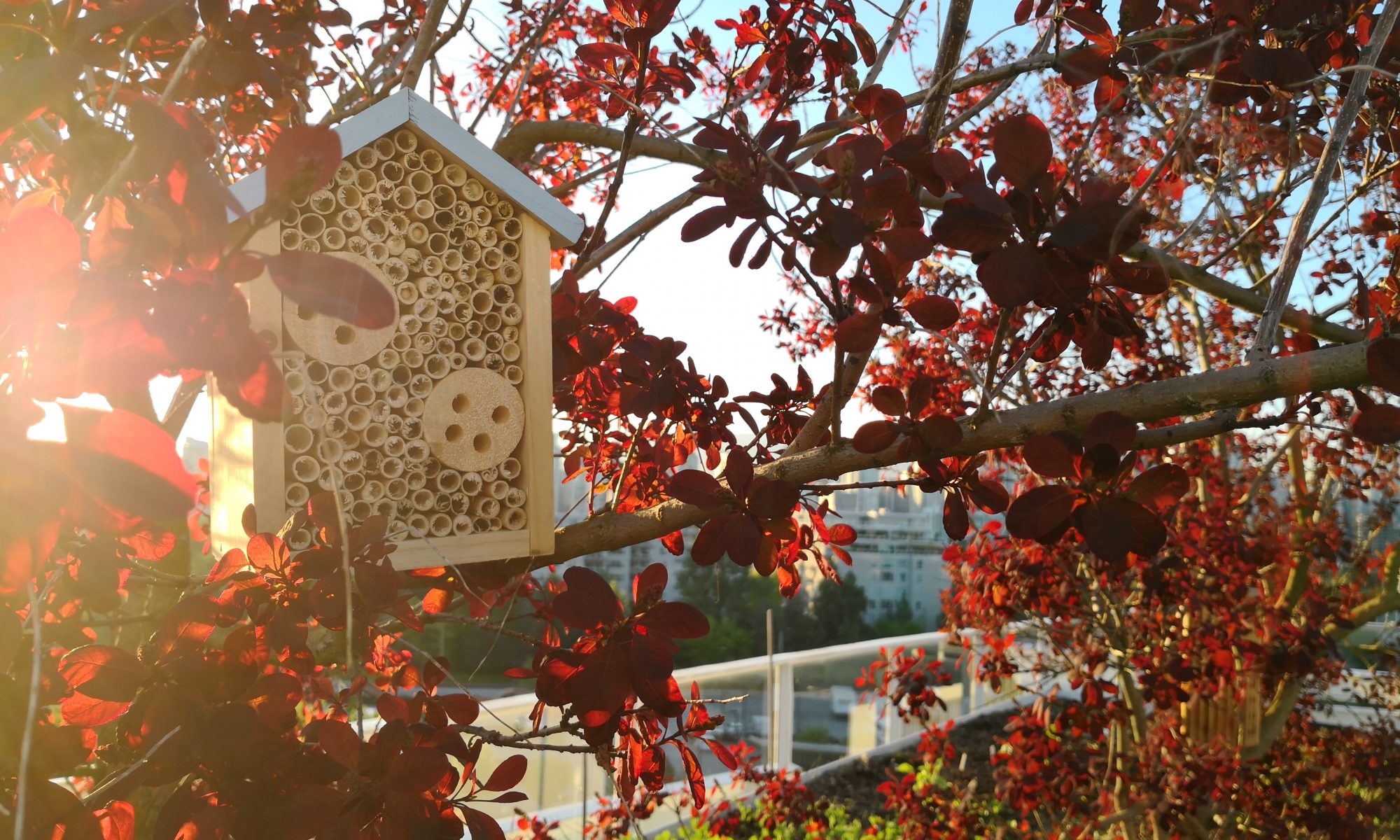Buy Mason Bee houses and refill tubes – US
Buy Mason Bee houses and refill tubes – Canada
What’s the problem with pollinators? There aren’t enough of them… and they sleep in.
My second year, I added berry bushes to the roof, and added to the count this past season. What I found is that the berries bud and flower much sooner than vegetables in this climate, and apparently much sooner than bumblebees and honeybees surface to help with pollination. As a result, I’ve had very limited fruit production, though this past year I was able to get some improvement by manually making the effort.
The fruit in question are:
- Gooseberries (european): 2 bushes
- Blueberries: 2 bushes
- Currants: 3 plants
Growing blueberries, gooseberries and currants – Amazon.ca
I don’t know if the issue is that local pollinators aren’t emerging at the same time, or whether the location, and relatively limited flower options means they don’t visit until blooms are more abundant. Regardless, it’s a problem that I’m trying to deal with on a couple levels in 2019.
First, I scattered wildflower seeds in some beds reserved for non-edibles in hopes that they will emerge and flower to provide additional options for any pollinators that do emerge and visit early in the year.
Second, I’ve purchased a number of solitary bee homes and will be seeding them with mason bees in March, in hopes that the early-emerging mason bees will bridge the time between early flower emergence and the arrival of the pollinators that service the broader pool of fruit and vegetable plants.
If anyone has other ideas I’m all ears, as I’d like nothing more than to have bushes loaded with berries through the spring/summer of 2019.
